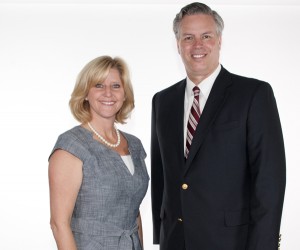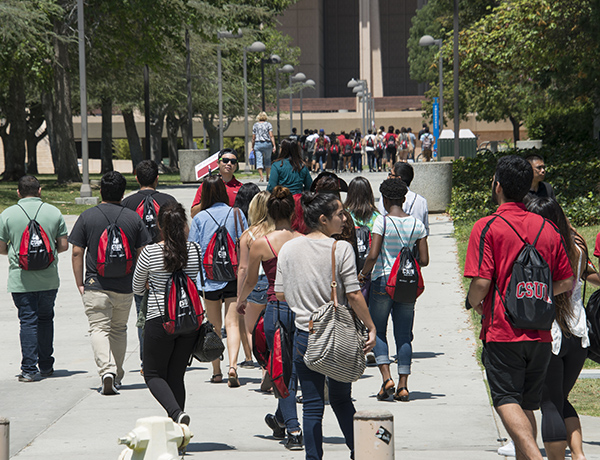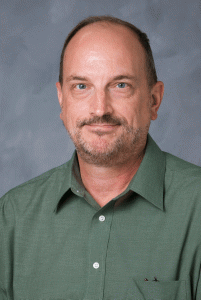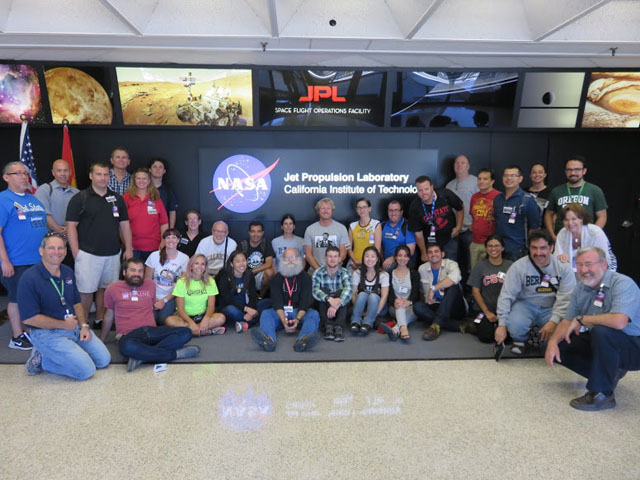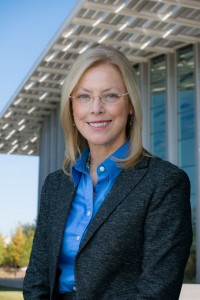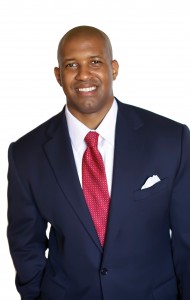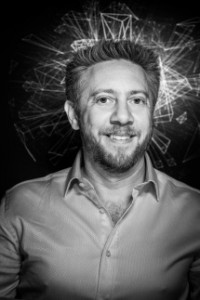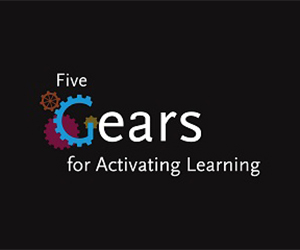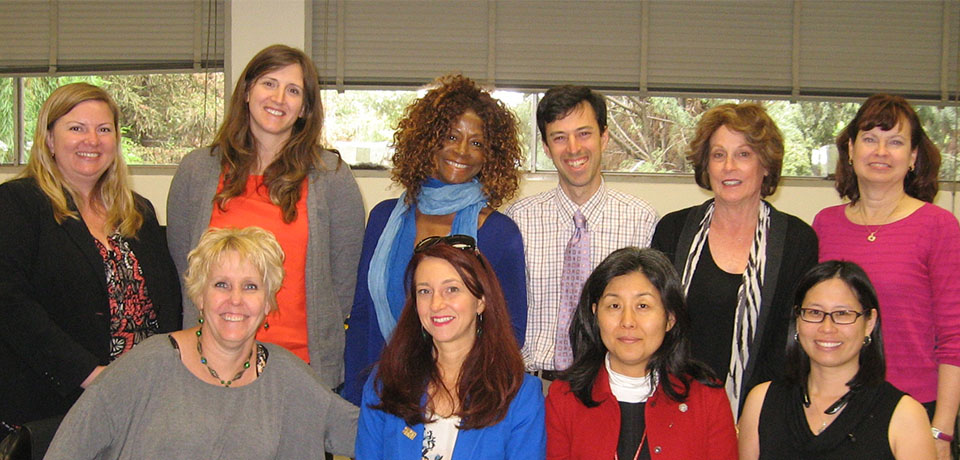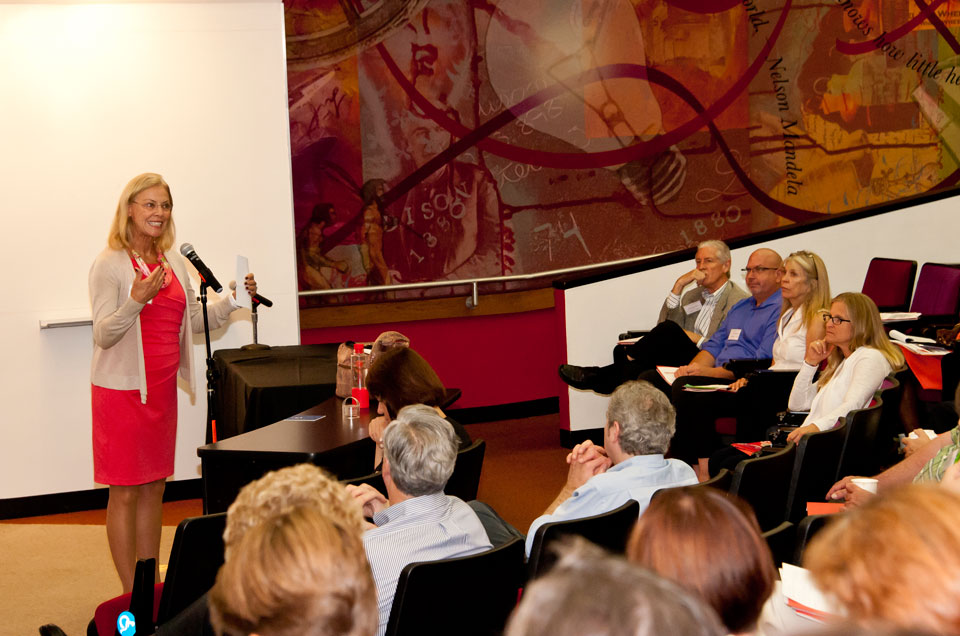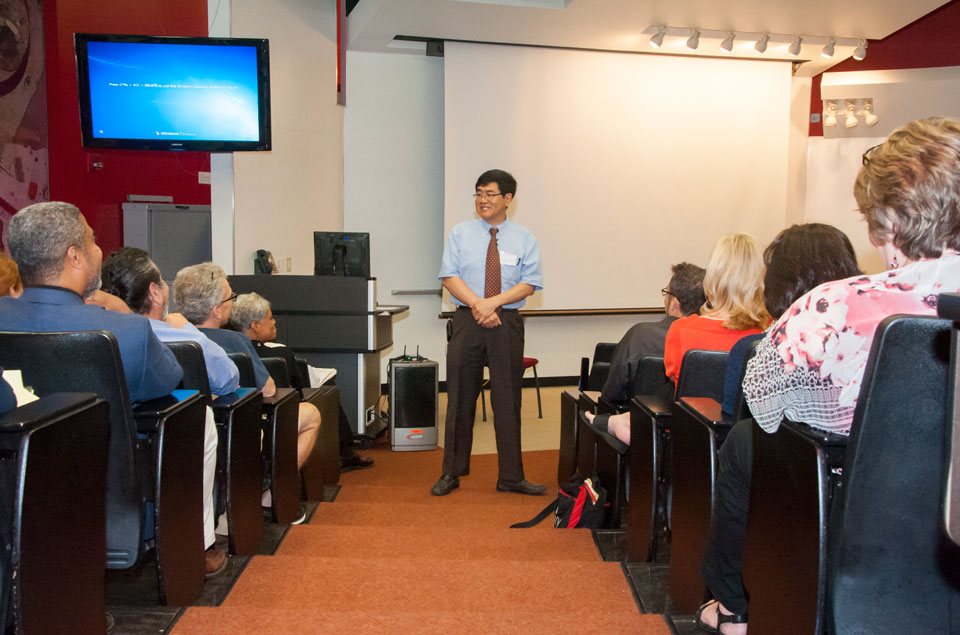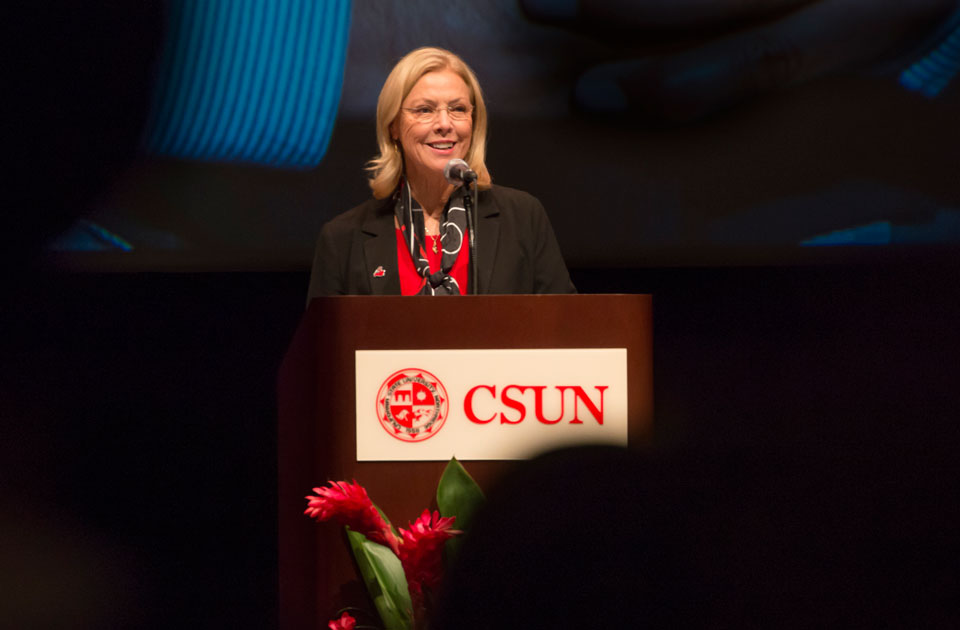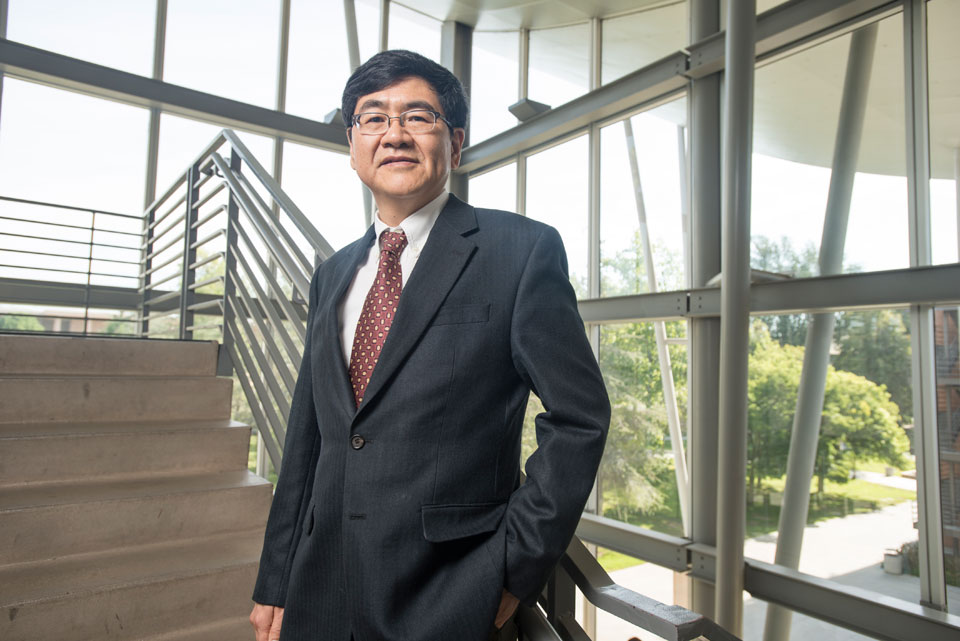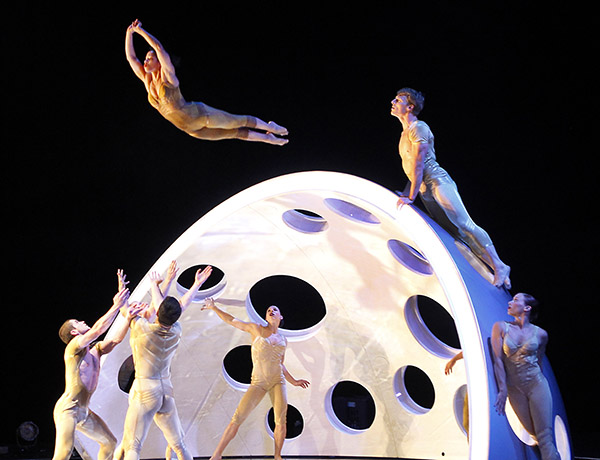![]()
In life, it’s interesting how a twist of fate can have a profound impact on one’s path, especially if that twist is a teenage diagnosis that points toward an unexpected, and not so colorful, road.
Take the case of Yi Li, who has just begun his tenure as provost for California State University, Northridge. Li succeeds Harry Hellenbrand, who served as CSUN’s provost for 11 years before stepping down June 30 to return to the classroom.
Li was born in Shanghai, China, and grew up in the remote northwest part of the country during the nation’s Cultural Revolution, when education was for the most part dysfunctional — with students learning some recitations, but not much else.
“To me, that was happiness. No more studying,” Li recalled, a slight smile playing across his face. “We learned a few things, then the rest of the time was play.”
Continuing to look back, Li lamented, “I had a mostly wasted K-12 education.”
He was barely in his teens when the Cultural Revolution ended, and Li was left with the quandary: how to make up for so many years without much “real” education? In 1977, he took the national college entrance exam to determine if he might be ready for higher education.
Li did well enough to be accepted to one of the top five universities in China, Xi’an Jiaotong University. When it came time to choose a major, he consulted his father, who had a degree in civil engineering, and chose engineering — but fate had another plan.
Li was found to be color blind. He could seek a college education, but his major would have to be mathematics, not engineering.
“At that time, it was believed that you needed to tell the red wire from the other wires to be able to do electrical engineering,” Li said. “When my family and I received the admission letter, I remember telling my parents I was not going to do it. I was going to refuse and try again the next year.”
His parents intervened after visiting the university to learn why their son had been redirected to mathematics from what he thought would be his true calling. What they found was a need for university professors, because during the Cultural Revolution the influx of educators had stagnated.
“I was attracted to becoming a professor because for years, the pursuit of knowledge had been really cast aside,” Li said. “It was becoming a new attraction.”
Newly inspired by the wonder of analysis and the holistic approach to mathematics, Li more than made up for lost time. He poured himself into mathematics, excelling alongside people who were nearly twice his age but had not been able to pursue an education because there was none to be had. By spring 1982, he had received his bachelor’s degree in mathematics and found a job as a teaching assistant.
Li had planned to switch his focus to physics during his graduate work, until he reached another crossroads.
“The leader of the department told me, ‘Yi, you are a very good student. If you switch back to studying mathematics, we’re going to nominate you to study in America, provided you pass the minimum passing score in English,’” he said.
Li’s English was poor, he recalled. Undeterred, he switched back to mathematics and worked hard for an entire year to better his English. Eventually, he took the proficiency exam and passed — but he noted that his score at the time would have been insufficient to get into CSUN today.
So where did Li end up in his “coming to America” journey to pursue a doctoral education? The University of Minnesota. While Minneapolis was hardly a bastion of cultural diversity for a young man from China, the university gave him room for growth after a very bumpy start.
Li pointed to his first qualifying exam, where he amassed 36 points out of a possible 200. The memory prompted him recently to search for his old test score, “to show our students here, ‘Maybe it doesn’t matter. It’s how you use your determination,’” the provost said.
He used that determination and thirst for knowledge throughout his Minnesota years, maneuvering through campus on a bicycle, even during the frigid, snow-packed winters. He took a practical approach to his still-developing grasp of English.
“I was shameless. I was fearless,” Li said. “I didn’t much mind speaking out, even though I knew 80 percent of what I said didn’t make much sense to people.”
After earning his doctorate in mathematics, Li climbed the higher education ladder, making stops at the University of Chicago and University of Rochester as an instructor, and then as a professor. At the University of Iowa, he began to establish himself as a respected voice for diversity in the science, technology, engineering and mathematics (STEM) fields.
Li recalled a time at Iowa when he counseled a doctoral candidate who joined him on a trip to recruit graduate students from Savannah State University in Georgia. At a restaurant, Li asked the doctoral candidate what his plans were for after completing his degree.
“When he told me his plan, it didn’t include a post-doctorate experience,” Li said. “At that time, and even now, if you don’t have a post-doctorate experience, your chance to work at a top research university is zero.”
Because the young man did not have anyone in his life who could be a guiding light for his academic career, he did not know how far his education could take him. Li said people like himself need to fill that void.
“This is our responsibility, to help students who have a desire,” Li said. “My only requirement is to work with us, to sweat with us. That’s the only requirement. Then, we’ll help them with everything else.”
By the time Li reached Wright State University in Dayton, Ohio, in 2011 as the dean of the College of Science and Mathematics, he was determined to help more minorities achieve a STEM education.
As CSUN’s provost, he is embracing the university’s top-notch academics, combined with its mission to serve so many underserved, first-generation college students — many of whom mirror the young doctoral candidate at that Georgia restaurant.
“What attracted me the most was the overarching value of CSUN, which is access, access and access — to the population in the region that we serve, and largely California,” Li said. “This region is economically very diverse. CSUN has a tradition of tailoring to students of different colors, different paths and different socioeconomic backgrounds. Once they’re here, CSUN develops programs and initiatives to actually ensure their success.
“Doing well will serve us for years to come, because this nation is going to become even more diverse. A university that can actually be a leader in serving the diverse student population is going to be a leader in the nation. I’m motivated to be that.”
Li approaches his first semester as provost at CSUN with the same passion he had when he first became enthralled with mathematics. He wants to engage CSUN students, to learn more about their motivations and help them achieve their dreams. He wants to see President Dianne F. Harrison’s “Seven Presidential Priorities” continue to grow and evolve. He wants to see CSUN continue to thrive as a force in the region for sending graduates into the workforce, prepared to make an impact on their organizations and the economy at large.
It has been a long time since those moments when he thought of turning his back on studying mathematics. It’s now his goal to have CSUN students find strength in what some might consider weakness.
“Color blindness can be a handicap, but you never know what the bigger plan is,” Li said. “For people who have disadvantages, through their struggles because of these disadvantages, I think people overlook the experience and the insight gained through their struggles. And that’s an advantage.”


 Rebecca Mieliwocki, the 2012 National Teacher of the Year and California State University, Northridge alumna, will lead hundreds of fellow educators in an exploration of the best classroom practices during an unprecedented convergence on Friday, July 31. Teachers will gather at 33 locations across the state, including CSUN, for a free summit led by teachers for teachers.
Rebecca Mieliwocki, the 2012 National Teacher of the Year and California State University, Northridge alumna, will lead hundreds of fellow educators in an exploration of the best classroom practices during an unprecedented convergence on Friday, July 31. Teachers will gather at 33 locations across the state, including CSUN, for a free summit led by teachers for teachers.